Abstract
The usefulness of the ligated rabbit ileal loop as an experimental model of Bacillus cereus food poisoning was investigated. Positive responses, as measured by fluid accumulation in the loop, were obtained from 19 of 22 strains of B. cereus. Four of six strains of B. thuringiensis also elicited fluid accumulation, but eight strains of other Bacillus spp. failed to evoke a response. The growth medium employed markedly affected the ability of a given strain of B. cereus to provoke a response. Brain heart infusion broth (BHI) (Difco) proved to be best for this purpose. Loop fluid-inducing activity was produced by exponentially growing cells and was present in cell-free culture filtrates and associated with washed vegetative cells. Intraluminal growth of B. cereus did not elicit fluid accumulation. Cultures grown at temperatures in the range of 18 C to 43 C were loop active. When BHI cultures of selected loop positive strains were injected intraluminally into the normal ileum of rabbits, they failed to elicit diarrhea.
Full text
PDF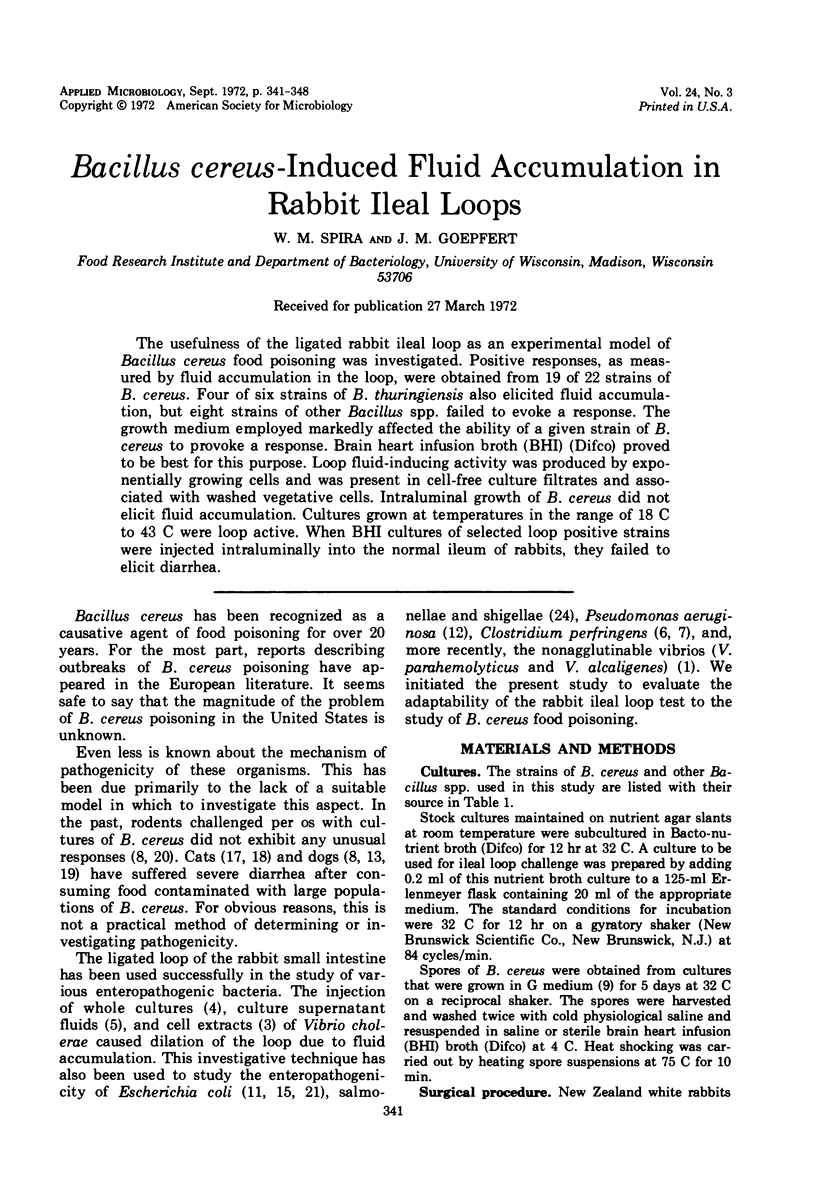
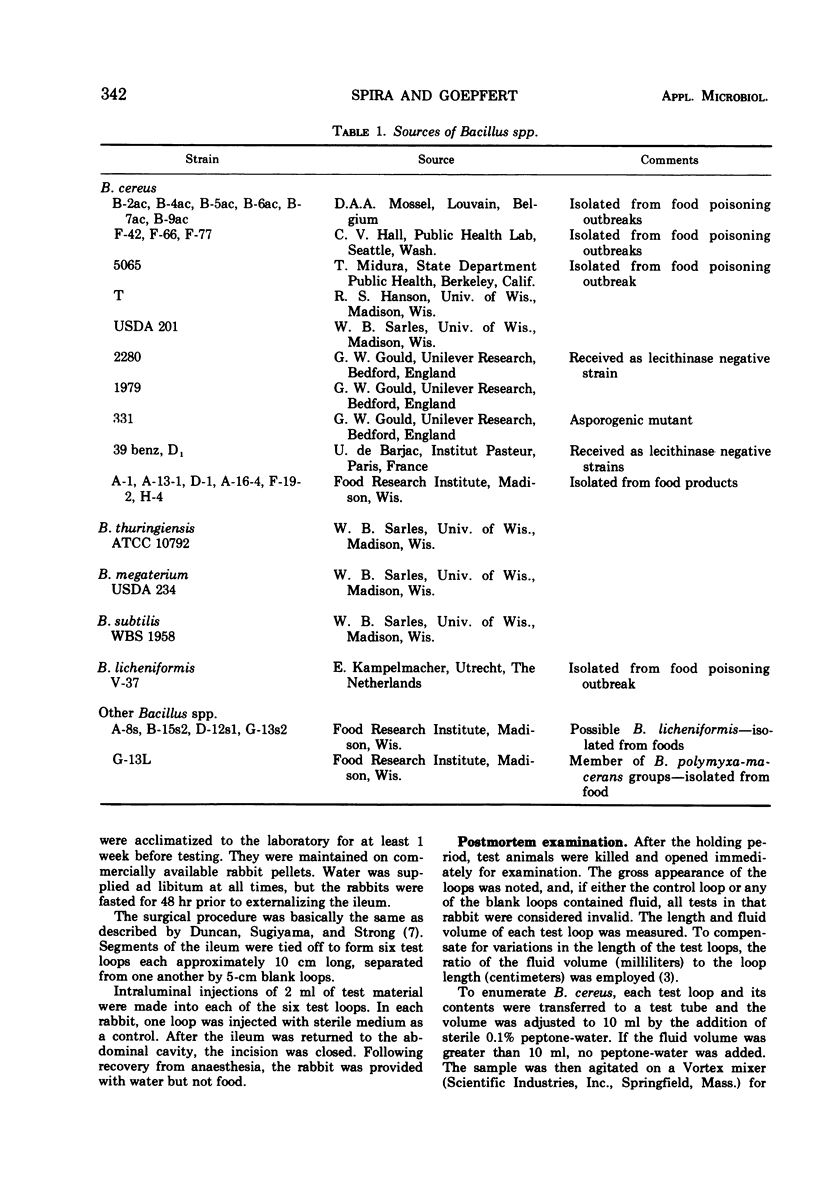
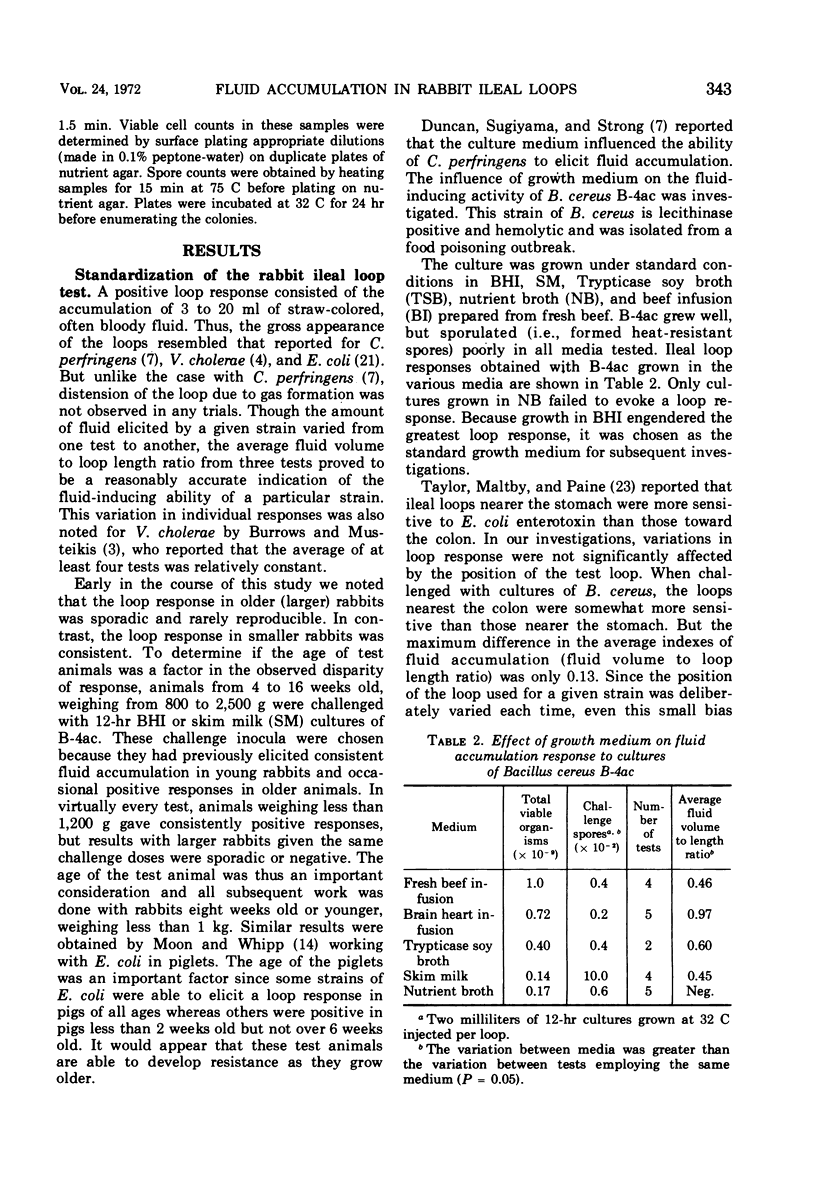
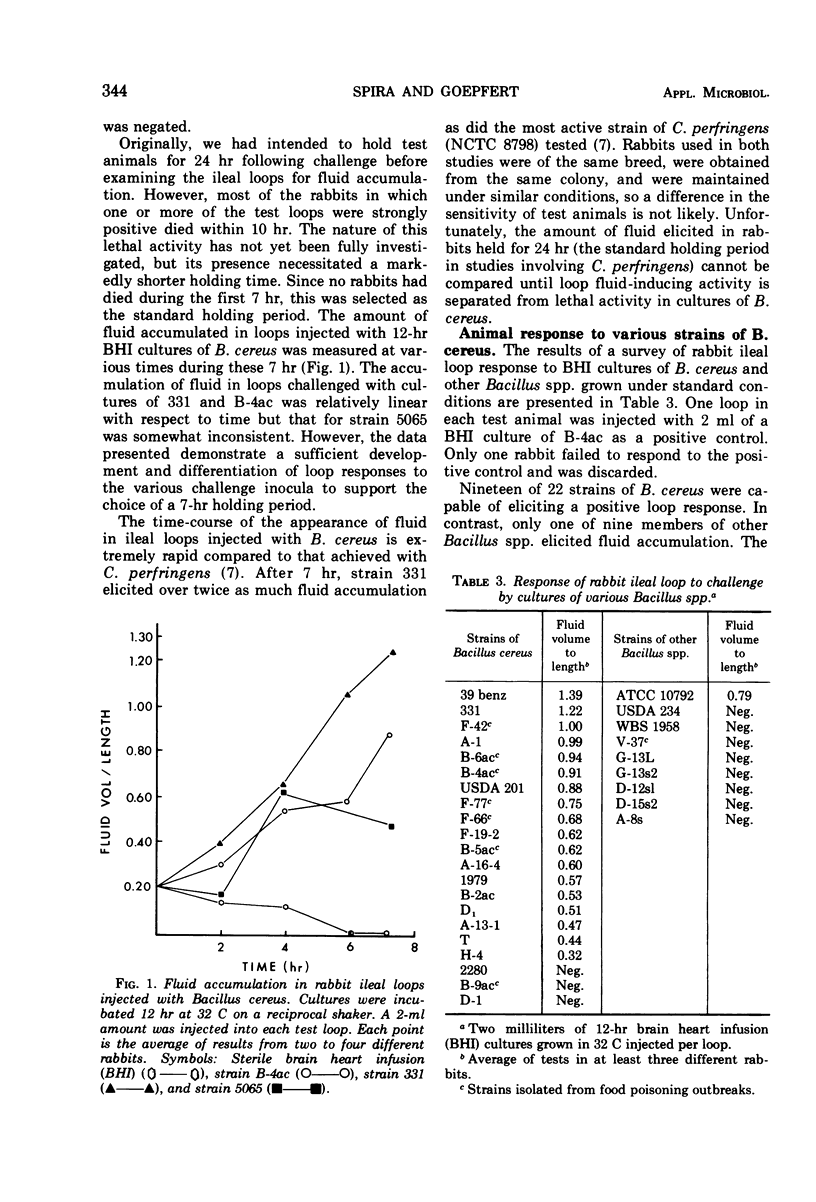
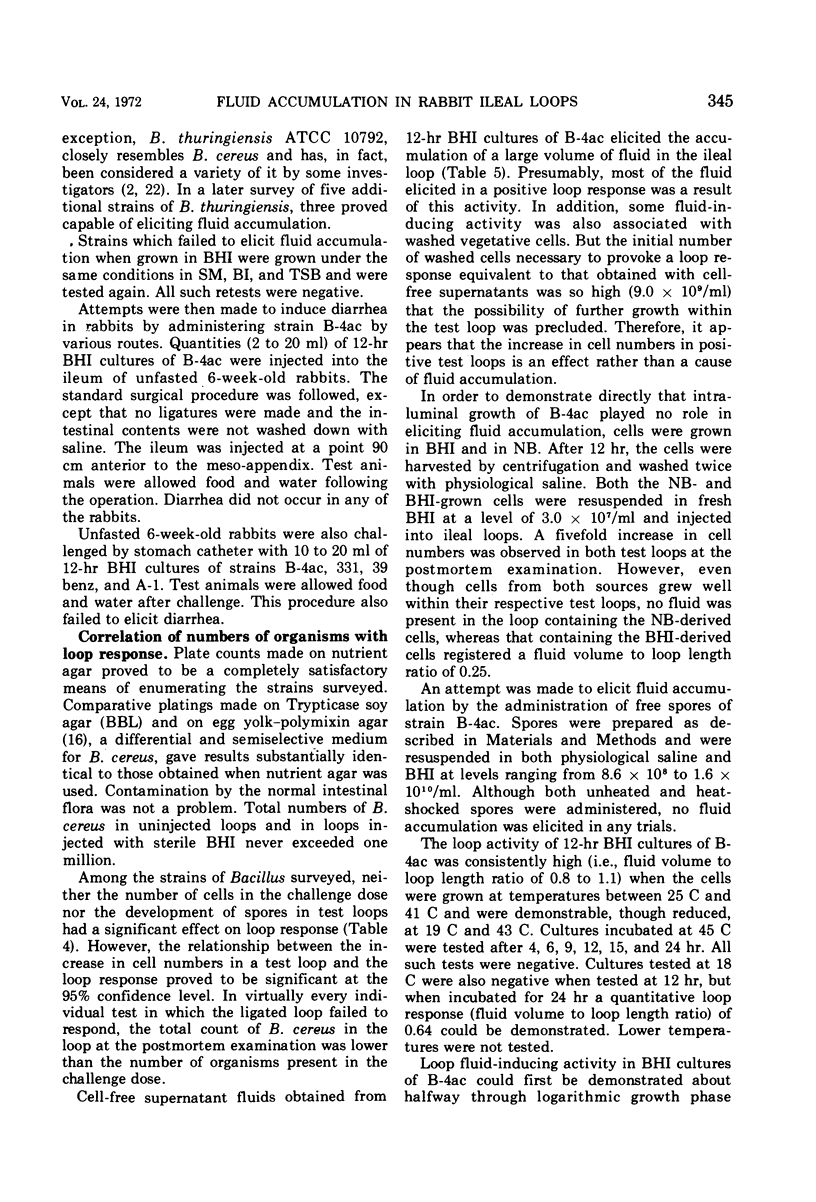
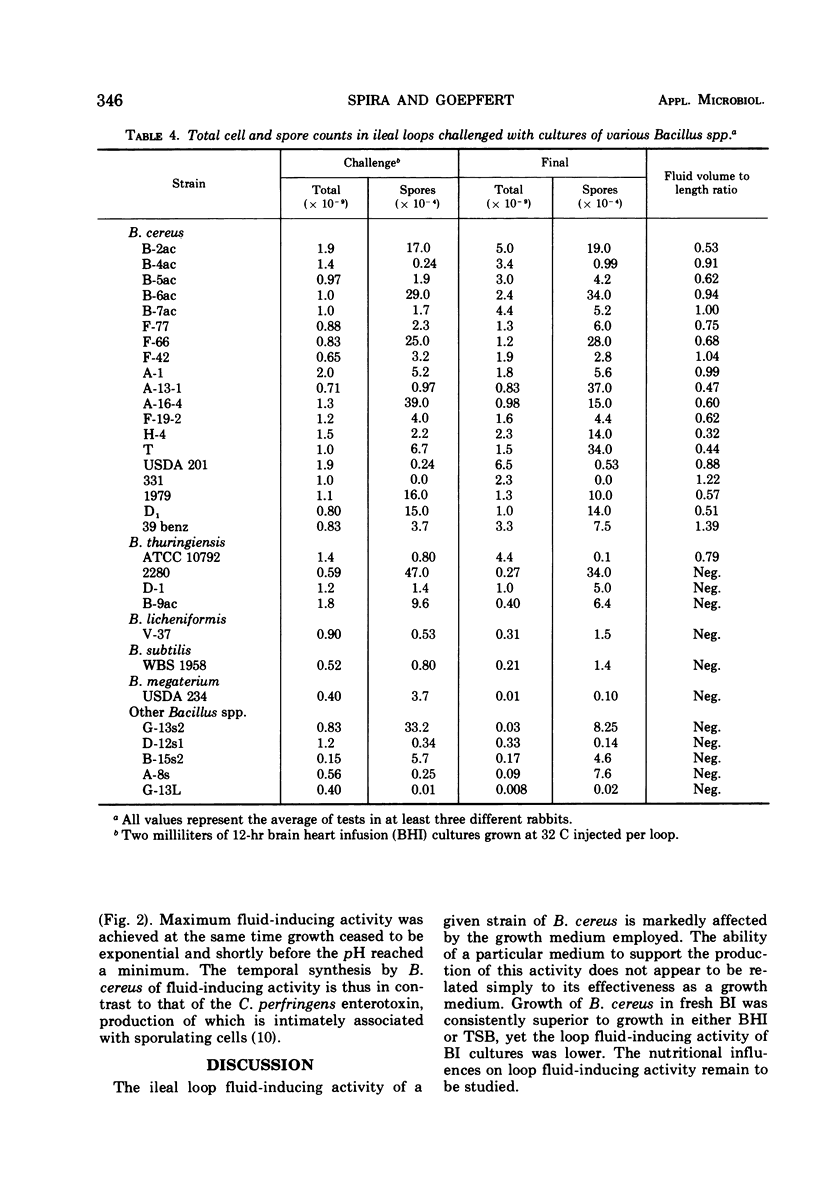
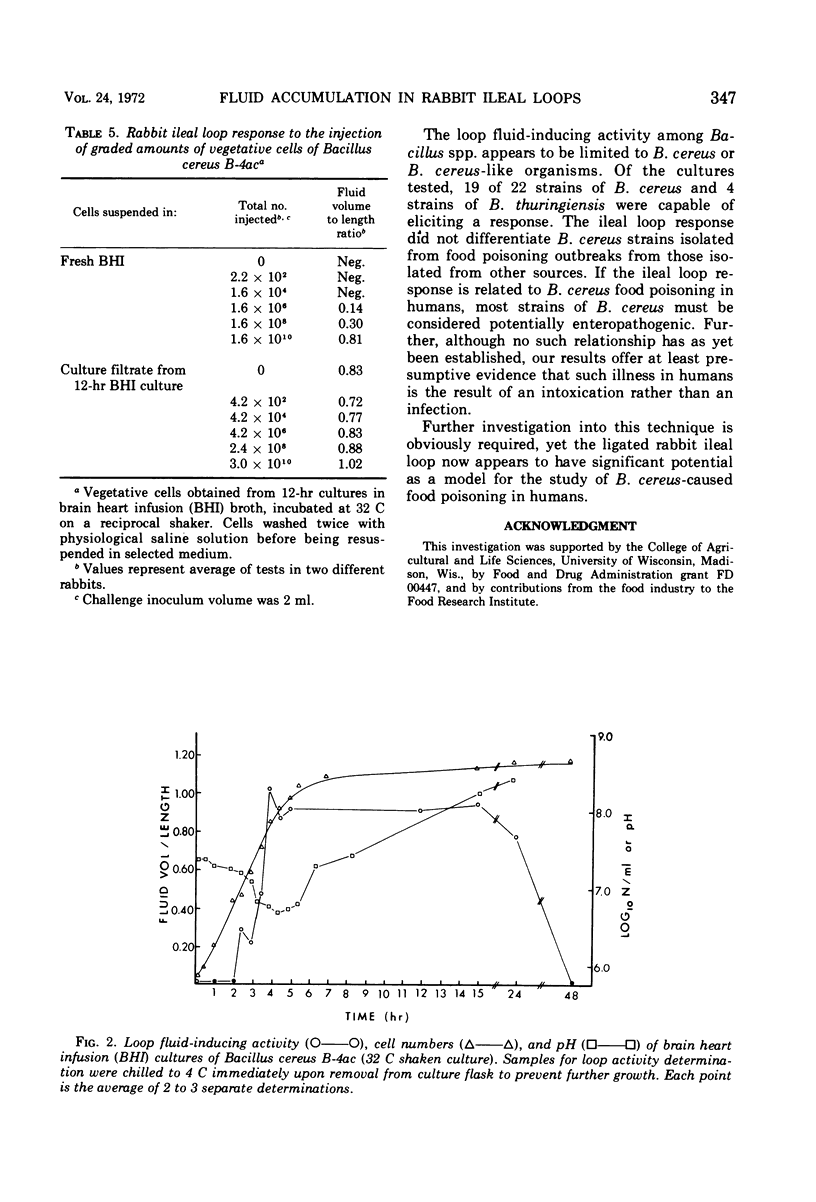
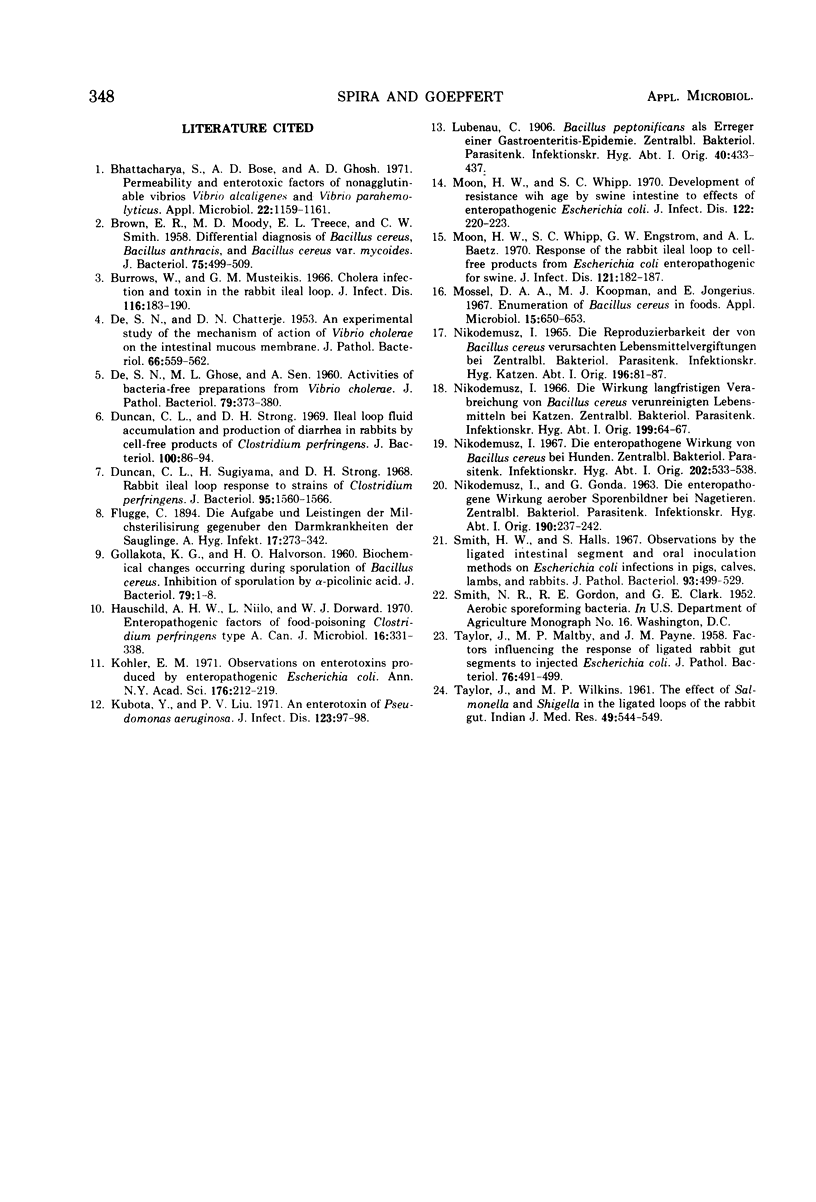
Selected References
These references are in PubMed. This may not be the complete list of references from this article.
- BROWN E. R., MOODY M. D., TREECE E. L., SMITH C. W. Differential diagnosis of Bacillus cereus, Bacillus anthracis, and Bacillus cereus var. mycoides. J Bacteriol. 1958 May;75(5):499–509. doi: 10.1128/jb.75.5.499-509.1958. [DOI] [PMC free article] [PubMed] [Google Scholar]
- Bhattacharya S., Bose A. K., Ghosh A. K. Permeability and enterotoxic factors of nonagglutinable vibrios Vibrio alcaligenes and Vibrio parahaemolyticus. Appl Microbiol. 1971 Dec;22(6):1159–1161. doi: 10.1128/am.22.6.1159-1161.1971. [DOI] [PMC free article] [PubMed] [Google Scholar]
- Burrows W., Musteikis G. M. Cholera infection and toxin in the rabbit ileal loop. J Infect Dis. 1966 Apr;116(2):183–190. doi: 10.1093/infdis/116.2.183. [DOI] [PubMed] [Google Scholar]
- DE S. N., CHATTERJE D. N. An experimental study of the mechanism of action of Vibriod cholerae on the intestinal mucous membrane. J Pathol Bacteriol. 1953 Oct;66(2):559–562. doi: 10.1002/path.1700660228. [DOI] [PubMed] [Google Scholar]
- DE S. N., GHOSE M. L., SEN A. Activities of bacteria-free preparations from Vibrio cholerae. J Pathol Bacteriol. 1960 Apr;79:373–380. doi: 10.1002/path.1700790219. [DOI] [PubMed] [Google Scholar]
- Duncan C. L., Strong D. H. Ileal loop fluid accumulation and production of diarrhea in rabbits by cell-free products of Clostridium perfringens. J Bacteriol. 1969 Oct;100(1):86–94. doi: 10.1128/jb.100.1.86-94.1969. [DOI] [PMC free article] [PubMed] [Google Scholar]
- Duncan C. L., Sugiyama H., Strong D. H. Rabbit ileal loop response to strains of Clostridium perfringens. J Bacteriol. 1968 May;95(5):1560–1566. doi: 10.1128/jb.95.5.1560-1566.1968. [DOI] [PMC free article] [PubMed] [Google Scholar]
- GOLLAKOTA K. G., HALVORSON H. O. Biochemical changes occurring during sporulation of Bacillus cereus. Inhibition of sporulation by alpha-picolinic acid. J Bacteriol. 1960 Jan;79:1–8. doi: 10.1128/jb.79.1.1-8.1960. [DOI] [PMC free article] [PubMed] [Google Scholar]
- Hauschild A. H., Niilo L., Dorward W. J. Enteropathogenic factors of food-poisoning Clostridium perfringens type A. Can J Microbiol. 1970 May;16(5):331–338. doi: 10.1139/m70-059. [DOI] [PubMed] [Google Scholar]
- Kubota Y., Liu P. V. An enterotoxin of Pseudomonas aeruginosa. J Infect Dis. 1971 Jan;123(1):97–98. doi: 10.1093/infdis/123.1.97. [DOI] [PubMed] [Google Scholar]
- Moon H. W., Whipp S. C. Development of resistance with age by swine intestine to effects of enteropathogenic Escherichia coli. J Infect Dis. 1970 Sep;122(3):220–223. doi: 10.1093/infdis/122.3.220. [DOI] [PubMed] [Google Scholar]
- Moon H. W., Whipp S. C., Engstrom G. W., Baetz A. L. Response of the rabbit ileal loop to cell-free products from Escherichia coli enteropathogenic for swine. J Infect Dis. 1970 Feb;121(2):182–187. doi: 10.1093/infdis/121.2.182. [DOI] [PubMed] [Google Scholar]
- Mossel D. A., Koopman M. J., Jongerius E. Enumeration of Bacillus cereus in foods. Appl Microbiol. 1967 May;15(3):650–653. doi: 10.1128/am.15.3.650-653.1967. [DOI] [PMC free article] [PubMed] [Google Scholar]
- NIKODEMUSZ I., GONDA G. DIE ENTEROPATHOGENE WIRKUNG AEROBER SPORENBILDNER BEI NAGETIEREN. Zentralbl Bakteriol Orig. 1963 Oct;190:237–242. [PubMed] [Google Scholar]
- Nikodemusz I. Die Reproduzierbarkeit der von Bacillus cereus verursachten Lebensmittelvergiftungen bei Katzen. I. Nikodemusz. Zentralbl Bakteriol Orig. 1965 Apr;196(1):81–87. [PubMed] [Google Scholar]
- Nikodemusz I., Gonda G. Die Wirkung langfristiger Verabreichung von B. cereus verunreinigten Lebensmitteln bei Katzen. Zentralbl Bakteriol Orig. 1966 Jan;199(1):64–67. [PubMed] [Google Scholar]
- Smith H. W., Halls S. Observations by the ligated intestinal segment and oral inoculation methods on Escherichia coli infections in pigs, calves, lambs and rabbits. J Pathol Bacteriol. 1967 Apr;93(2):499–529. doi: 10.1002/path.1700930211. [DOI] [PubMed] [Google Scholar]
- TAYLOR J., MALTBY M. P., PAYNE J. M. Factors influencing the response of ligated rabbit-gut segments to injected Escherichia coli. J Pathol Bacteriol. 1958 Oct;76(2):491–499. doi: 10.1002/path.1700760218. [DOI] [PubMed] [Google Scholar]


